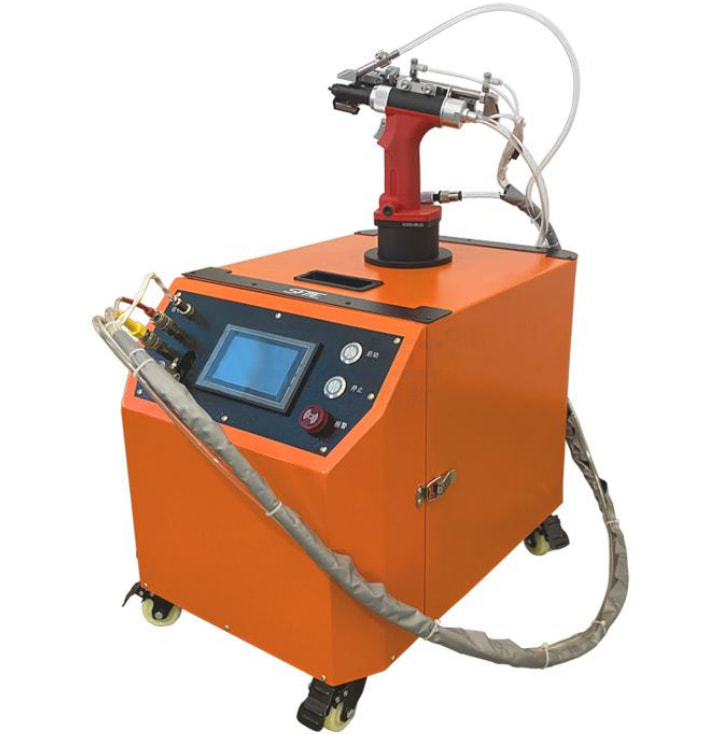A guide to an automatic riveting machine includes an overview of its functions, setup, operation, and maintenance. Here are the key steps and considerations for using an automatic riveting machine:
1. Overview of Automatic Riveting Machine:
Components: Understand the main components of the machine, including the feeding system, rivet placement mechanism, rivet driving system, and control panel.
2. Machine Setup:
Installation: Ensure the machine is installed on a stable and level surface.
Power Supply: Connect the machine to a stable power source according to the specifications.
Air Supply: If the machine operates using pneumatic power, connect it to a clean and regulated air supply.
3. Rivet Selection:
Size and Type: Choose the appropriate rivet size and type based on the material and thickness of the workpieces being joined.
4. Feeding System:
Loading Rivets: Load the rivets into the feeding system, ensuring proper alignment for consistent feeding.
5. Workpiece Preparation:
Alignment: Ensure the workpieces are properly aligned on the machine bed.
Clamping: Secure the workpieces in place using the machine's clamping mechanism.

6. Machine Programming:
Settings: Input the required parameters such as rivet type, size, and spacing into the machine's control panel.
Testing: Perform a test run to ensure the machine is set up correctly and the rivets are placed accurately.
Related links:7. Operation:
Initiation: Start the machine according to the automatic riveting machine manufacturer's instructions.
Monitoring: Regularly monitor the riveting process for any issues such as misalignment, jams, or inconsistent riveting.
8. Safety Precautions:
Personal Protective Equipment (PPE): Ensure operators wear appropriate PPE, including safety glasses and ear protection.
Emergency Stop: Familiarize operators with the location and use of the emergency stop button.
9. Quality Control:
Inspection: Regularly inspect the riveted joints for proper alignment, tightness, and overall quality.
Adjustments: Make any necessary adjustments to the machine settings to address quality issues.
10. Maintenance:
Cleaning: Regularly clean the machine, removing any debris or accumulated material. - Lubrication: Lubricate moving parts according to the manufacturer's recommendations. - Inspections: Conduct routine inspections to identify and address any worn or damaged components.
11. Troubleshooting:
Manual: Keep the machine's user manual readily available for reference. - Training: Provide training to operators on basic troubleshooting procedures.
12. Record Keeping:
Log: Maintain a log of machine settings, maintenance activities, and any issues encountered during operation.
By following these steps and considerations, operators can effectively use and maintain an automatic riveting machine, ensuring consistent and reliable performance in various industrial applications.Learn more
227
0
0
All Comments (0)
Related Articles
If you are interested in sending in a Guest Blogger Submission,welcome to write for us!
Comments